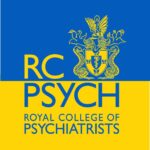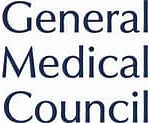Autism
Autism in Children
Autism Spectrum Disorder (ASD) is a neurodevelopmental condition characterized by difficulties in social communication, repetitive behaviours and restricted interests. ASD presents on a spectrum, with varying degrees of severity and symptomatology.
Predisposing Factors
There is no single cause of autism; it is thought to arise from a combination of genetic and environmental factors. Some key predisposing factors include:
Genetic Factors:
- ASD has a strong genetic component, with studies showing that if one child in a family has ASD, there is a higher likelihood of a sibling being diagnosed.
- Specific gene mutations, chromosomal abnormalities (e.g., fragile X syndrome), and inherited genetic predispositions are associated with a higher risk of ASD.
Environmental Factors:
- Prenatal exposure: Maternal infections during pregnancy, advanced parental age, and certain medications e.g. valproic acid have been linked to an increased risk.
- Birth complications: Premature birth, low birth weight, or hypoxia may also increase the risk.
- Gender: Boys are diagnosed with autism more frequently than girls. Recent research indicates that girls may be underdiagnosed due to different symptom presentations.
Clinical features of ASD
Autism’s presentation varies widely across individuals, but core symptoms usually manifest in early childhood, often before age 3yrs. These symptoms are typically grouped into two main categories:
- Social Communication and Interaction Difficulties.
- Repetitive Behaviors and Restricted Interests.
Other common features may include Sensory sensitivities (e.g., being overly sensitive to lights, sounds, or textures) and Difficulty with motor coordination and planning (dyspraxia).
Diagnosis
The diagnosis of ASD is made through a comprehensive evaluation that includes detailed developmental history and clinical observation.
Standardized Diagnostic Tools used.
Autism Diagnostic Observation Schedule (ADOS): A structured, standardized observational assessment used to evaluate communication, social interaction, and play or imaginative use of materials.
Autism Diagnostic Interview-Revised (ADI-R): A structured interview with parents or caregivers to gather detailed developmental history.
Treatment
There is no cure for autism, but early intervention and tailored intervention can help children develop necessary skills and minimize challenges. Treatment typically focuses on improving communication, social skills, and adaptive behavior, as well as addressing sensory issues and comorbid conditions (e.g, anxiety, ADHD).
- Behavioral and Developmental Interventions
- Speech and Language Therapy
- Occupational Therapy (OT)
- Social Skills Training
- Educational support
- Family support
Medications
While there are no specific medications for autism itself, treating comorbidities where applicable helps the overall prognosis.


